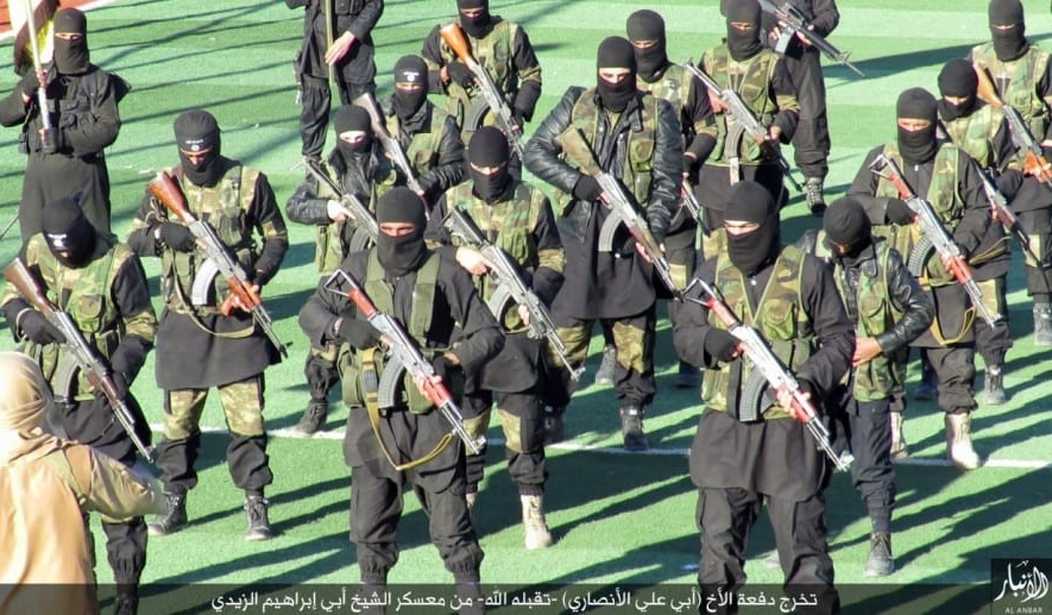ARLINGTON, Va. — The spokesman for U.S. operations in Iraq and Syria today noted that there has been a “resurgence” among ISIS in some of the terror group’s pockets along the Euphrates river, and stressed that “even though ISIS is not flying their black flag in certain areas, that doesn’t mean that it is not a threat.”
Speaking via video link from Baghdad, Col. Ryan Dillon said ISIS fighters are known to be concentrated around the Euphrates town of Hajin and in Dashisha, which is west of Deir ez-Zor.
Asked about the number of ISIS fighters in one of the occupied regions, Dillon said he didn’t have an estimate but “the remaining numbers of ISIS fighters is less of a concern for us than it is the ability for them to stand up and work as networks and work as an organization.”
“So they are very much contained in the areas where they still remain. And our attempt is to continue to go after them in these areas,” he said.
Pressed on whether a previous estimate of under 1,000 fighters was still accurate or if that had dipped, Dillon wouldn’t provide numbers.
“But what I will say is that as far as the territory that still remains, where ISIS still holds territory, it is less than 10 percent. And I talked about our areas, but what I don’t want to do is — is we had said 98 percent. But as we’ve seen ISIS start to resurge in areas west of the Euphrates River, we’ll just keep it at, you know, well over 90 percent of the territory that ISIS used to have has been retaken,” he said.
“…As we’ve seen, you know, throughout Iraq and in Syria, we knew that ISIS, you know, even though you know they have been defeated militarily, that they were not going to just give up. You know, many have run back into the desert areas and into these vast rural areas to hide and attempt to regroup. But that doesn’t mean that they’re exclusively just in these desert areas. Others have attempted to go back into and blend back in with population centers, as well.”
The Syrian Democratic Forces have retaken some territory from ISIS in the Middle Euphrates River Valley within the past month, even as their fighters have been pulled north to defend Kurdish cities from Turkish attacks.
“What I will say is there really has been no gain of territory — significant gain of territory since the departure of many of those fighters that left to go towards Afrin,” Dillon said. “So, again, we have — in an effort to make sure that we can contain ISIS in these areas, there is obstacles that were put into place, and we have since focused some of our air assets to be able to identify targets and conduct deliberate planning. And now we’re starting to see some more strikes as a result of that.”
“Are we going to see more Syrian Democratic Forces come back and reconstitute combat power in these areas? I know that’s something that we are urging and trying to get to, so that we can build up that combat power and start to push again in these areas and take ground,” he added.
On current levels of U.S. anti-ISIS operations in Iraq, Dillon said the coalition has “reallocated and repositioned forces within Iraq to address what it is that we are doing.”
“There are, I would say, fewer advisers particularly down at the tactical level than what we saw during major combat operations. You have also a lot of the train-and-equip missions — some of that is run by the U.S., but the vast majority of that training is by non-U.S. actors and nations within the coalition,” Dillon said. “…The Iraqis say, ‘All right, let’s look out to the future and this is what we think that we’re going to need to address our security concerns.’ And then we match what we have to those priorities and we allocate accordingly.”









Join the conversation as a VIP Member